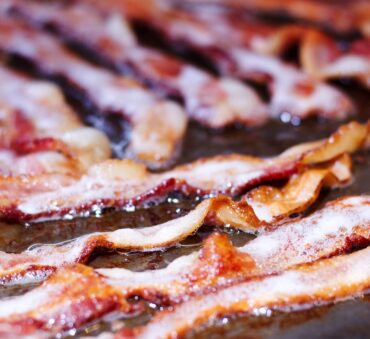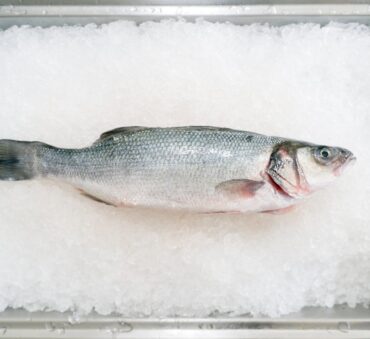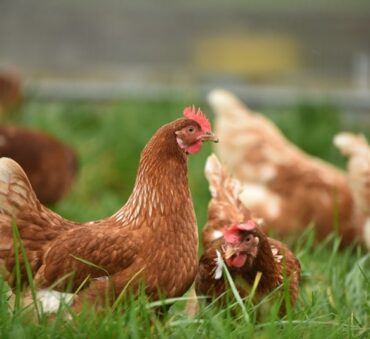Every year, the holiday season brings us tables overflowing with delicious meals while we celebrate the time-honored tradition of feasting.
Yet, in the shadows of these joyous gatherings lies an often-overlooked challenge – the significant increase in food waste.
As the festive spread turns to leftovers, the reality of its impact comes into focus. Whether you’re a food manufacturer, wholesaler, retailer, or restaurateur, understanding and addressing the surge of holiday food waste is crucial.
Let’s cover all about tracking and tackling holiday food waste, including some useful strategies, advanced technologies, and regulations to be aware of.
Key Takeaways
- The surge in food waste during holidays is often driven by over-purchasing, lack of meal planning, and improper storage.
- Businesses can significantly cut down their holiday food waste by embracing technology for tracking waste and adopting sustainable practices like composting.
- The combined efforts of communities and corporations play a pivotal role in spreading awareness and implementing effective strategies to manage holiday food waste.
- Adhering to food waste laws in the US is crucial to ensure compliance and contribute to reducing food waste during the holiday season.
Understanding the Scale of Holiday Food Waste
The term “holiday spirit” often equates to lavish feasts and generous spreads. However, behind these joyful celebrations, food waste statistics tell a different story.
For example, during Thanksgiving alone, Americans discard an astonishing 200 million pounds of turkey, a figure that barely scratches the surface of the overall food waste in landfills during this period.
Moving to Christmas, the narrative is similar, with the UK reporting over 4 million Christmas dinners being thrown away. This also results in negative environmental outcomes like increased greenhouse gas emissions and tons of wasted resources.
It’s not just a case of a few extra pies or an untouched bowl of cranberry sauce. It’s a systemic issue that sees nearly 30% of our festive food purchases ending up as waste. This startling reality is a wake-up call, reminding us how important mindful consumption and efficient food management are, even during the holidays.
Causes of Increased Food Waste During Holidays
While our holiday habits seem harmless, in the grand scheme of things, they contribute to a massive food waste problem. Here are some of the common culprits behind this seasonal surge:
- Over-purchasing: During the holidays, our eyes are often bigger than our stomachs. A study shows that over 65% of shoppers buy more food than needed during festive seasons, driven by the fear of running short during gatherings. This over-purchasing habit, fueled by special offers and bulk-buying deals, often results in excess food that eventually finds its way to the bin.
- Improper storage: Even with the best intentions, improper storage of holiday groceries can lead to premature spoilage. The rush of holiday preparations means that proper food storage often takes a backseat, leading to a faster degradation of perishable items.
- Lack of planning: The holiday season can be hectic, and without proper meal planning, it’s easy to fall into the trap of over-preparing. A lack of planning not only leads to cooking in excess but also results in purchasing ingredients that often remain unused or forgotten in the back of the fridge.
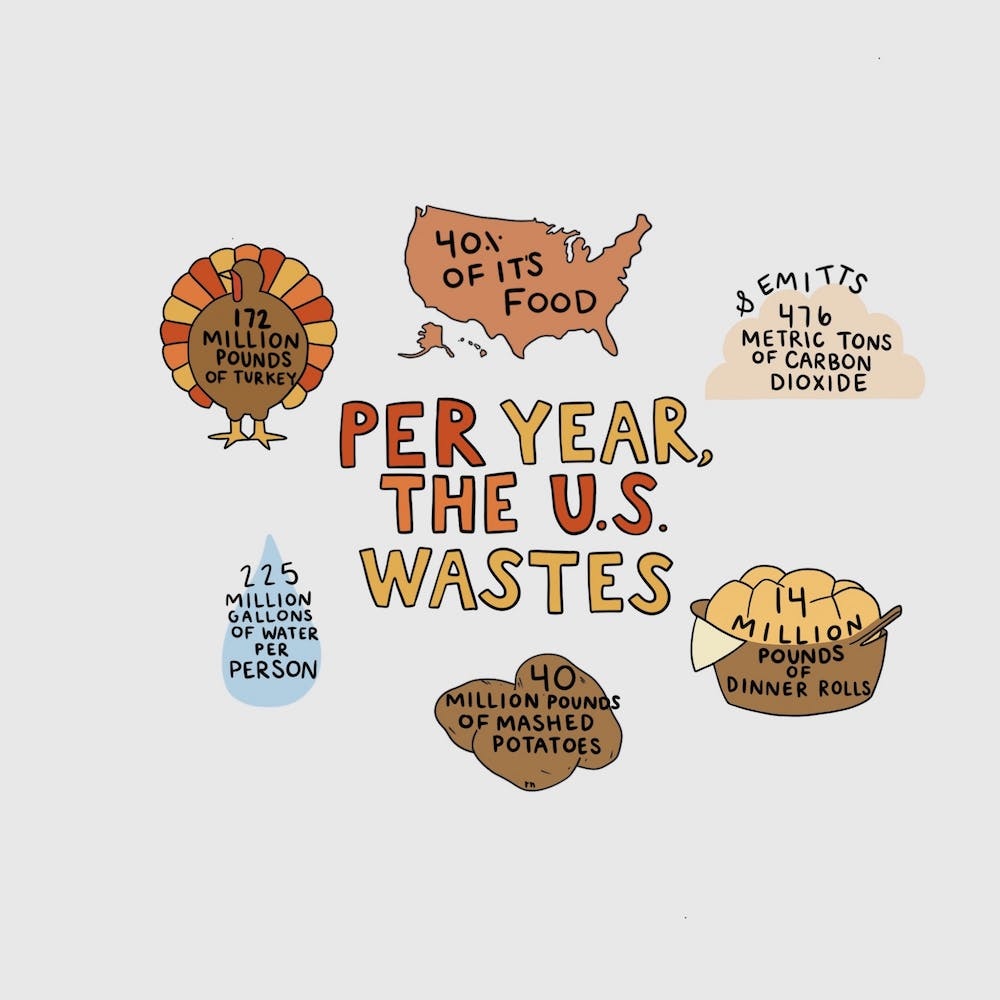
Tracking and Measuring Holiday Food Waste
Imagine if every festive gathering could quantify the food that goes uneaten.
By implementing a food waste tracking system, businesses and households alike can gain valuable insights.
Simple practices like keeping a food waste diary or using digital tools can reveal surprising patterns. How much stuffing gets thrown out? Do party platters always end up half-eaten?
Tracking these trends can lead to smarter purchasing and preparation decisions.
Implementing Food Waste Tracking Systems
Implementing a food waste tracking system can help you become more environment-friendly and efficient.
But where should you start?
Often, the first step is conducting a food waste audit that helps you identify where waste occurs and how you can eliminate it.
Here are the steps involved in this process:
- Start with awareness: Begin by identifying what gets thrown away. Is it mostly perishable items or cooked food?
- Tech to the rescue: Leverage technology with apps and digital tools designed for tracking food waste. These tools can provide detailed insights into your waste patterns, making it easier to implement changes.
- Engage everyone involved: From kitchen staff to suppliers, make sure everyone is on board. Training and regular meetings can help maintain focus on the goal of reducing waste.
- Set realistic goals: Use the data from your food waste tracker systems to set achievable targets. Perhaps it’s reducing waste by a certain percentage or repurposing leftovers in creative ways.
- Review and adjust: Regularly review the data and adjust your practices accordingly. Sometimes, small changes can lead to significant reductions in waste.
Leveraging Technology in Food Waste Management
Imagine turning the tide on waste with just a few clicks and swipes.
Let’s shed light on how technology, from savvy apps to innovative online tools, is reshaping the way we are tackling food waste during the holidays.
- Smart apps at your service: There are numerous apps designed for tracking food waste, offering features like inventory management, portion planning, and even suggesting recipes based on what you have. These user-friendly apps not only help to reduce waste but also save money and time.
- Online tools for larger impact: For businesses, online waste management tools can provide comprehensive data analytics, tracking waste from the kitchen to the bin. Food waste tracking technology helps in identifying patterns and areas of high waste, enabling you to reduce it significantly.
- Integration with existing systems: Many of these tech solutions seamlessly integrate with existing inventory and management systems, making the transition to digital tracking smooth and efficient.
- Online platforms: social media and online communities are great places to share tips, strategies, and success stories about reducing food waste. This not only spreads awareness but also builds a network of support.
Strategies to Reduce Holiday Food Waste
Even though the holiday season can result in significant amounts of food waste, with some careful planning, reducing this waste can be simpler than you might think.
Here are some easy-to-implement strategies to ensure your festive feasting doesn’t contribute to the waste problem.
Planning and Purchasing Wisely
As the holiday season rolls in, it’s easy to get swept up in the festive frenzy, especially when it comes to food. But with a bit of planning and smart purchasing, we can indulge in the season’s delights without contributing to the growing issue of food waste.
For example, you can:
- Craft your menu with care: Tailor your holiday menu based on the number of guests and their preferences. Consider including dishes that can be easily scaled up or down. This way, you prepare just the right amount, reducing the likelihood of excess.
- Shop with a strategy: Arm yourself with a well-thought-out shopping list. Resist impulse buys and those tempting holiday specials that lead to overstocking your pantry. Remember, a great deal isn’t so great if it ends up in the trash.
- Choose versatility in ingredients: Opt for ingredients that can multitask across different dishes. This approach not only streamlines your shopping but also ensures that every bit of what you buy gets used.
- Consider shelf life: Balance your menu with a mix of perishable and longer-lasting items. This way, even if you do have leftovers, they won’t rush you into a use-it-or-lose-it scenario.
Proper Food Storage and Preservation
When the holidays bring a cornucopia of dishes, the challenge often lies not just in preparation but in preservation. Proper storage of holiday foods is key to extending their shelf life and minimizing waste.
Let’s unwrap some effective, yet simple, strategies to keep your festive fare fresh longer:
- Understand your fridge’s geography: Different areas in your refrigerator have different temperatures. Store meats on the lower shelves where it’s coldest and keep your vegetables in the crisper where humidity levels are ideal.
- Embrace airtight containers: Whether it’s leftover cranberry sauce or half a pumpkin pie, storing food in airtight containers can significantly extend its shelf life. Plus, they stack neatly, saving precious fridge space.
- Get creative with leftovers: Transform them into new meals. That roast turkey can become a savory pie, and mashed potatoes can be repurposed into potato pancakes for breakfast.
- Freeze with finesse: Freezing is your ally, especially for cooked dishes. Remember to cool your food before freezing and label your containers with dates. This method is perfect for pies and casseroles that can be enjoyed well beyond the holiday season.
- Dry and can where possible: Drying herbs and canning certain foods like cranberry sauce or pickles can significantly prolong their life and add a homemade touch to your pantry.
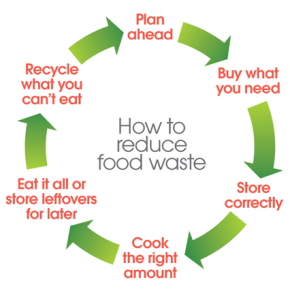
Composting and Recycling Food Scraps
Amid the holiday season’s culinary extravaganzas, a hidden treasure lies in the form of food scraps. Yes, those peels, cores, and leftovers can be a boon, not a bane, it is a method of composting organic food scraps.
Let’s cover the essentials of transforming these scraps into compost:
- Start simple: If you’re new to composting, start with a small bin in your backyard or even under your sink. You can compost fruit and vegetable scraps, eggshells, coffee grounds, and more.
- Balance is key: A good compost needs a balance of ‘greens’ (your food scraps) and ‘browns’ (like dried leaves or newspaper). This mix helps break down the material efficiently and controls odor.
- Involve the family: Make composting a holiday tradition. Kids love the magic of turning leftovers into ‘garden gold’. Plus, it’s a great way to teach them about sustainability.
- Spread the joy: Once your compost is ready, use it to enrich your garden or share it with neighbors and community gardens. It’s a gift that keeps giving, improving soil health and boosting plant growth.
- No backyard? No problem! Look for local composting facilities or community programs where you can drop off your food scraps.
Importance of Community & Corporate Engagement in Holiday Food Waste Management
The battle against holiday food waste isn’t a solo endeavor. It’s a collective journey where community actions and corporate policies play a crucial role.
Community Initiatives and Public Awareness
As the holiday season twinkles with lights and laughter, there’s a growing awareness at the community level about the shadow of food waste. Here’s how community initiatives can help in reducing food waste during these festive times:
- Knowledge-sharing workshops: Communities can host education workshops on food waste, covering everything from smart shopping to composting. These gatherings can be fun and interactive, turning learning into a festive activity.
- Food sharing platforms: Establish local platforms, either online or physical, where people can share excess holiday food with neighbors.
- Community composting: Encourage local composting projects where residents can bring their holiday food scraps. This not only reduces waste but also creates a valuable resource for community gardens.
- Public awareness campaigns: Launch campaigns that highlight the impact of food waste and simple ways to reduce it. These could be through local media, social media, and at community events.
- Celebrate success stories: Share stories of how individuals and local businesses successfully reduced their holiday food waste. These stories can inspire others and spread the word about effective strategies.
Corporate Responsibility and Sustainable Practices
Let’s unwrap how corporate responsibility and sustainable practices can make a difference.
- Waste audit and reduction plans: Start with a thorough audit of food waste. This analysis can lead to targeted strategies for reducing waste, whether it’s through better inventory management or optimizing portion sizes.
- Upcycling food waste: Businesses, especially in the food industry, can explore innovative food waste upcycling methods. This could involve turning scraps into new culinary creations or partnering with companies that transform waste into energy or other products.
- Donation drives: Embrace the spirit of the season by donating excess edible food to local shelters or food banks. It’s a gesture that resonates with community values and corporate social responsibility.
- Employee engagement: Encourage employees to participate in food waste reduction through training and awareness programs. Incentivize sustainable practices both in the workplace and at home.
- Collaborate for change: Partner with waste management companies, local communities, and other businesses to create a collective impact. A Food Waste Company like Shapiro can lead to innovative solutions and set industry standards
Regulations & Policies on Holiday Food Waste
The food waste laws in the US are evolving to address the growing concerns around environmental sustainability and resource management. Here’s a snapshot of how these regulations is shaping our approach to holiday food waste.
- Organics recycling mandates: Several states have introduced laws mandating the recycling of organic waste, including food scraps. These laws aim to divert food waste from landfills, reducing methane emissions and encouraging composting or energy generation.
- Food donation incentives: The US federal government, along with many states, offers tax incentives for businesses that donate food. This not only helps reduce food waste but also addresses food insecurity.
- Date labeling standards: To combat confusion over food expiration dates, some states have standardized labeling, helping consumers and retailers make better decisions about food safety and waste.
- Zero waste goals: Cities and states are increasingly adopting zero waste goals, which include strategies to reduce food waste, especially during peak times like the holidays.
- Corporate waste reporting: Certain jurisdictions require larger businesses to report their food waste, making them more accountable and pushing them to find innovative waste reduction solutions.
Conclusion: A Season of Sustainable Celebrations
As the festive lights dim and the holiday cheer subsides, we’re left to reflect on the impact of our celebrations, particularly the often-overlooked issue of holiday food waste.
If you’re looking for help to manage this seasonal waste, Shapiro emerges as a guiding light. With our deep expertise in waste management and innovative approaches, we empower businesses and communities to transform their holiday waste into opportunities for sustainability.
Contact us today to learn how we can help you reduce your holiday food waste.
Food Waste During the Holidays: FAQs
Here are the answers to some common questions:
Estimates indicate that Americans alone waste around 25% more food between Thanksgiving and New Year’s.
You can reduce food waste during Thanksgiving and Christmas by:
1. Planning meals carefully
2. Storing food properly
3. Serving smaller portions
4. Encouraging guests to take leftovers home
An estimated 5 million puddings, 2 million turkeys, and 74 million mince pies are thrown away each Christmas.
You can compost organic waste, recycle different packaging wraps, and donate unopened food items.
Increased buying of food and gifts, coupled with excess packaging and decorations, leads to higher waste and environmental impact.
Americans waste approximately 200 million pounds of turkey during Thanksgiving.
Food waste contributes to methane emissions in landfills, and excessive use of resources for food production impacts the environment.
You can measure and manage your food waste through audits and different tracking systems and tools.
This is a process where a business or household analyzes its waste production to identify ways to minimize or eliminate waste generation.
Baily Ramsey, an accomplished marketing specialist, brings a unique blend of anthropological insight and marketing finesse to the digital landscape. Specializing in educational content creation, she creates content for various industries, with a particular interest in environmental initiatives.

